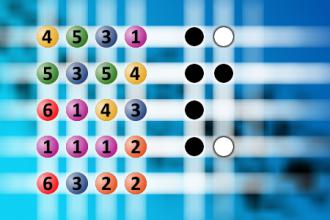Find the right combination
The computer chose a secret code (sequence of 4 digits from 1 to 6). Your goal is to find that code. Black circles indicate the number of hits on the right spot. White circles indicate the number of hits on the wrong spot.Correct answers: 27
The first user who solved this task is Nílton Corrêa De Sousa.
#brainteasers #mastermind

I love you today and I will love you tomorrow
I love you today and I will love you tomorrow, and the next day and even next week.
In 4 months, I will love you, just like I loved you yesterday. 40 years from now, I’ll run my hands through my grey hair and smile at the thought of how much I love you. I just hope you’ll be with me through all that time.
In 4 months, I will love you, just like I loved you yesterday. 40 years from now, I’ll run my hands through my grey hair and smile at the thought of how much I love you. I just hope you’ll be with me through all that time.

